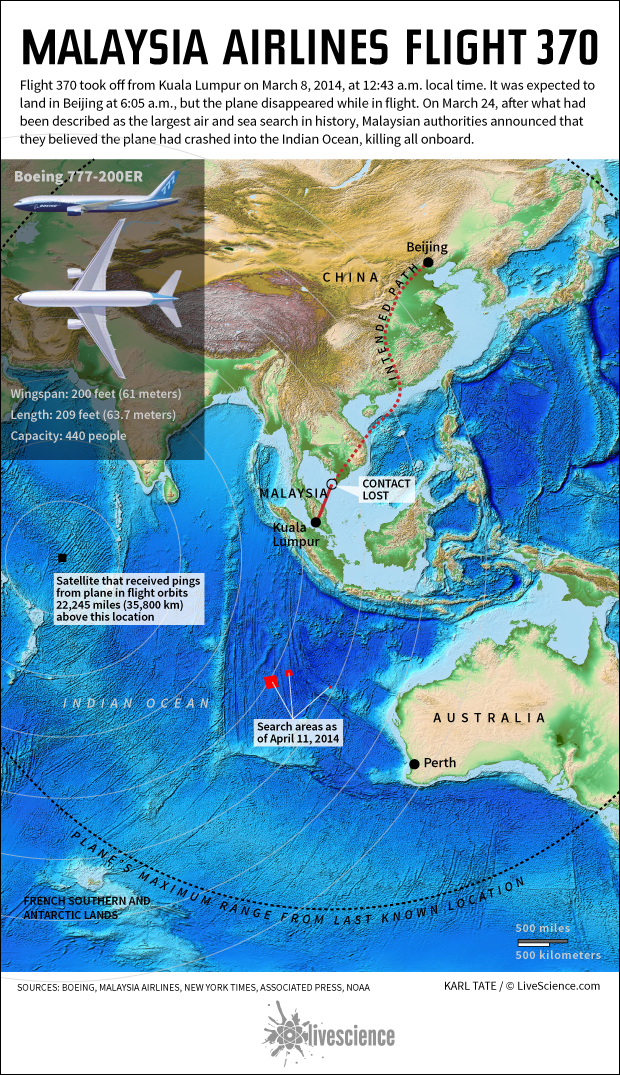Flight 370: 'Ping' Signals 'Most Promising Lead' Yet

Signals that may have come from the black box on the Malaysia Airlines plane that disappeared last month have been detected in the southern Indian Ocean, giving investigators an important clue in the ongoing search for the missing jetliner.
An Australian ship, called Ocean Shield, picked up signals consistent with those emitted from airplane black boxes in the northern part of the designated search area, CBS News reported. The first signal lasted 2 hours and 20 minutes, and after the ship turned around, a second signal was detected and held for 13 minutes.
If confirmed, the signals could be a much-needed breakthrough in the month-long investigation into the fate of the lost plane.
"Clearly, this is a most promising lead, and probably in the search so far, it's probably the best information that we have had," retired Australia Air Chief Marshal Angus Houston, who is coordinating the search, said at a news conference, according to CBS News. "Significantly, this would be consistent with transmissions from both the flight data recorder and the cockpit voice recorder." [Facts & Timeline About Malaysia Flight 370]
Still, Houston said it could take days to verify whether the pings came from a black box aboard Malaysia Airlines Flight MH370. Once officials narrow down the patch of the Indian Ocean where the signals were detected, robotic submarines could be used to more effectively search the waters.
"In very deep oceanic water, nothing happens fast," Houston said, according to CBS News. "Without wreckage, we can't say it's definitely here. We've got to go down and have a look, and hopefully, we'll find it somewhere in the area that we narrowed [it down] to."
On Friday (April 4), a Chinese ship also detected sounds, described as "pulse signals," in the Indian Ocean, roughly 345 miles (555 kilometers) from where the Australian ship, Ocean Shield, was searching. Houston said the signals were at the same frequency as the plane's black boxes, and investigators are now using sophisticated sound-locating equipment to determine their origin, according to CBS News.
Sign up for the Live Science daily newsletter now
Get the world’s most fascinating discoveries delivered straight to your inbox.
The Australian Maritime Safety Authority is leading the search effort, but planes and ships from the United States, Australia, New Zealand, Japan, China and South Korea are all operating in the area.
The Malaysia Airlines jet has been missing since March 8, when it mysteriously disappeared during a scheduled flight from Kuala Lumpur to Beijing. An ongoing investigation has concluded that the plane's last-known position was in the middle of the Indian Ocean, but the exact whereabouts of the aircraft, and its passengers, remains unknown.
Follow Denise Chow on Twitter @denisechow. Follow Live Science @livescience, Facebook & Google+. Original article on Live Science.

Denise Chow was the assistant managing editor at Live Science before moving to NBC News as a science reporter, where she focuses on general science and climate change. Before joining the Live Science team in 2013, she spent two years as a staff writer for Space.com, writing about rocket launches and covering NASA's final three space shuttle missions. A Canadian transplant, Denise has a bachelor's degree from the University of Toronto, and a master's degree in journalism from New York University.










